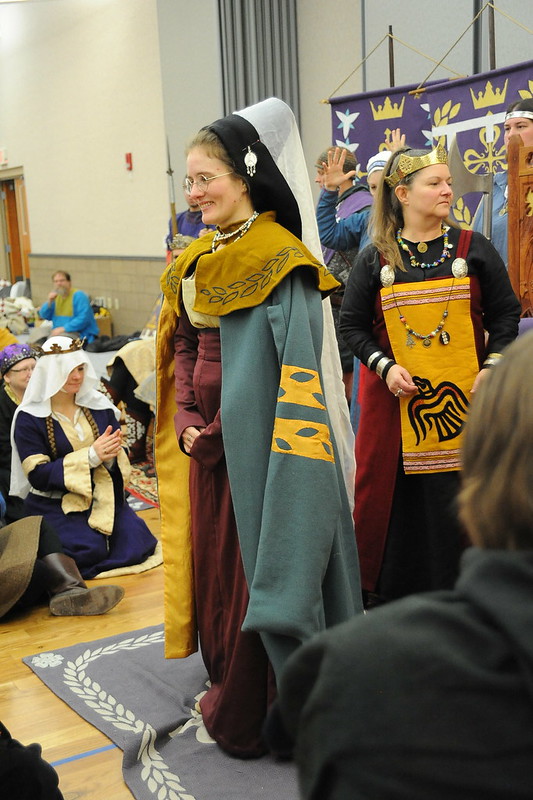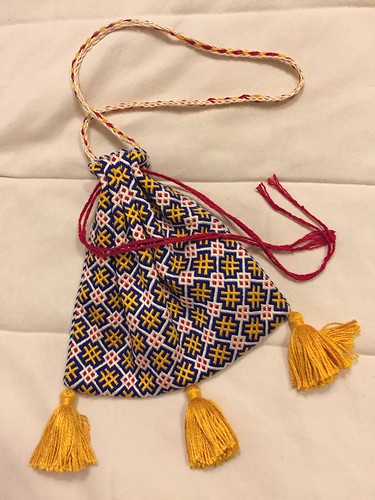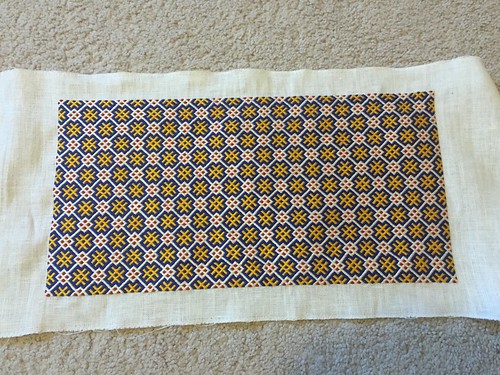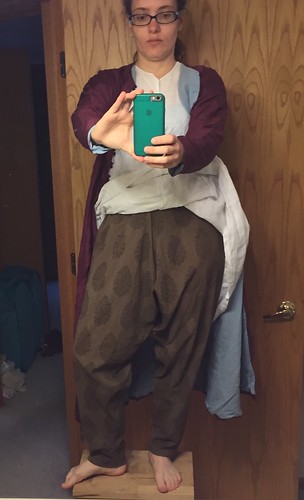14 January 2017
05 January 2017
Elsewhere in blog land
There have been some really good resources put out lately, these are a few that I recommend:
Fur primer at Cotte Simple. This overview includes a lot of different fur types, not just vair, ermine and gris, and has great images for examples and recognizing different types.
Women's Headwear 1480-1520 at Clothing the Low Countries. A subject near and dear to my heart!
Overview of 16th Century Dutch Women’s Clothing, also at Clothing the Low Countries. Although I'm not sure I'd ever want to wear the later styles, this is a good survey of Dutch women's fashion in the 1500s.
Fur primer at Cotte Simple. This overview includes a lot of different fur types, not just vair, ermine and gris, and has great images for examples and recognizing different types.
Women's Headwear 1480-1520 at Clothing the Low Countries. A subject near and dear to my heart!
Overview of 16th Century Dutch Women’s Clothing, also at Clothing the Low Countries. Although I'm not sure I'd ever want to wear the later styles, this is a good survey of Dutch women's fashion in the 1500s.
18 November 2016
The finished brick stitch purse
Well hello there! Things have been happening, but not making it to the blog. I haven't had any large clothing projects to encourage me to post, and a fair bit of my crafting time has diverted to metalwork and enamel.
The last picture of this was just the embroidery, flat. The next step was lining. I fully backed the embroidery with a lightweight linen, raw edges to the inside, before folding to a pouch shape. Then folded in half, the sides were whipstitched together going through both lining and embroidery ground. Those edges were then covered in a tubular tablet woven-edging (4 cards, threaded for wide diagonals and set for a chevron). That edging continues up across the top edge opening. In theory, the edging could also be the initial stitching holding the edges together, but I was happier having that already lined up perfectly and stable. The carrying string and the drawstring are both fingerloop braids. The handle string is a six-loop braid ( A grene dorge of vj bowes -- c. 1475), using full strands of the embroidery silk. For the drawstring, which needed to be thin, I split the silk from 2-ply to single, and then used the divided five loop braid to make two matching strings. And finally, tassels. There's a whole skein of silk in those three.
The last picture of this was just the embroidery, flat. The next step was lining. I fully backed the embroidery with a lightweight linen, raw edges to the inside, before folding to a pouch shape. Then folded in half, the sides were whipstitched together going through both lining and embroidery ground. Those edges were then covered in a tubular tablet woven-edging (4 cards, threaded for wide diagonals and set for a chevron). That edging continues up across the top edge opening. In theory, the edging could also be the initial stitching holding the edges together, but I was happier having that already lined up perfectly and stable. The carrying string and the drawstring are both fingerloop braids. The handle string is a six-loop braid ( A grene dorge of vj bowes -- c. 1475), using full strands of the embroidery silk. For the drawstring, which needed to be thin, I split the silk from 2-ply to single, and then used the divided five loop braid to make two matching strings. And finally, tassels. There's a whole skein of silk in those three.
01 February 2016
02 October 2015
September challenge: Brown
For the brown challenge, I made a pair of salwar to wear with my 16th c. Persian clothes. They are made of a lightweight, block-printed cotton from India that was originally cream with black, which I then overdyed to brown. The pattern is incredibly simple: two tapered tubes. They're held up by a separate cord or thin belt. The cut is the same as the closest extant items I'm aware of, which are Ottoman Turkish pants from the same time period. Those ones were very high status, and made from brocades that look fairly stiff. Persian silhouettes are generally softer and more fluid that Turkish ones, and cotton and block printing were both available. I choose this print because it preserves at large scale the design aesthetic - large individual motifs, well separated by blank space, and largely symmetrical. The motif itself is probably a bit too complex, but is not glaringly bad.
The Challenge: September - Brown
Fabric: 2.5 yds block-printed cotton
Pattern: none
Year: 16th c. Persian
How historically accurate is it:Matches (limited) information - materials speculative.
Total cost: $40.
The Challenge: September - Brown
Fabric: 2.5 yds block-printed cotton
Pattern: none
Year: 16th c. Persian
How historically accurate is it:Matches (limited) information - materials speculative.
Total cost: $40.
18 August 2015
Running to stand still
I have been making things, but none of it has really felt ... blog-worthy? I made a wool hood for myself, very basic. I felted another hat - this one went a lot more smoothly than the first one. Both of those were tied to the HSM July challenge (accessories). The brick stitch pouch is death by a thousand stitches (and then another thousand, and another...). It's halfway through August, and the only ideas I've had for the HSM challenge would be multi-month projects. Unless inspiration strikes, I'll be skipping this one. I do have a plan for September, though, and I've even ordered fabric.
Subscribe to:
Posts (Atom)



